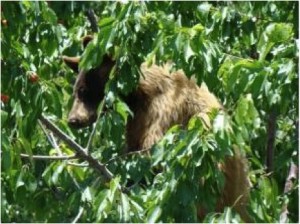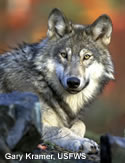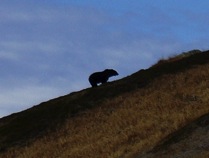The technical term for intense eating is ‘hyperphagia.’ It means to eat and drink as much as possible, almost frantically, throughout the entire day with only short rest periods. Both black and grizzly bears must do this during the late summer, fall and early winter in order to prepare themselves and their cubs for 5 to 7 months of winter denning.
So although your blue jays may be squawking at you for those tasty black sunflower seeds, or you reason that those rotting apples in your orchard could wait a few more days until you pick them up so you can take advantage of the last sunny days to go hiking, or you just can’t get up out of bed in the cold morning to bring out your trash on garbage day, think twice about nearby bears practicing hyperphagia. Now is the most important time to make that extra effort to keep bears out of your neighborhood.

As natural edibles become scarce with the season, bears can be attracted to human sources of food; unsecured garbage, birdseed in feeders, rotting fruit on orchard floors and pet food left outdoors. Unfortunately, this unnatural interaction between humans and bears can lead to conflict.
Be part of the solution, not part of the problem this autumn. Wait to feed your birds until mid-November. Take out your garbage on the day of pick-up, or store it indoors until you go on a dump run. Pick up rotting fruit in your orchard and trim low hanging branches. And store your barbeque and pet food indoors. You can make all the difference in your community. And pass this important information on to your neighbors too!
For more tips on keeping your yard free of bear attractants, read Tips for Coexistence. If you’d like to share this important information with your neighbors, print or order our Bear Safe Door Hanger. For more information about how to responsibly feed birds in bear country, read Attract Birds, Not Bears.



